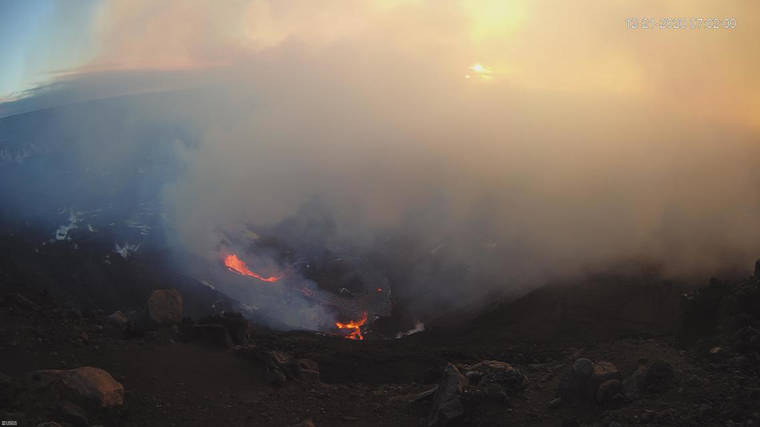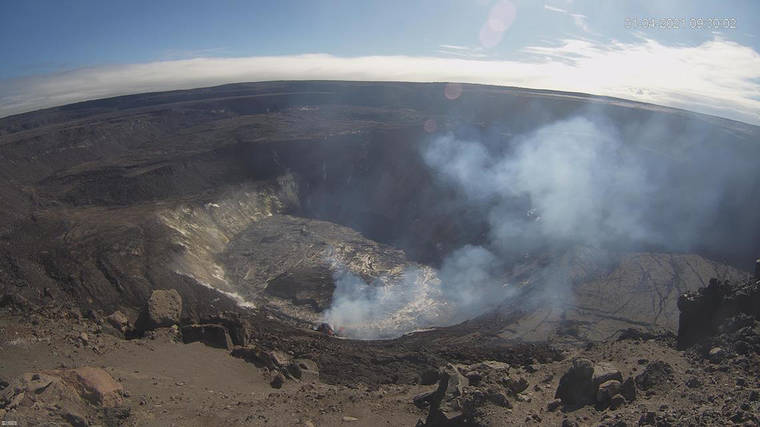Voggy conditions are forecast for West Hawaii through at least midweek as Kilauea’s most recent eruption continues, forecasters said Monday.
With trade winds forecast to continue through at least Thursday, portions of Hawaii Island southwest of Kilauea’s summit, primarily the North Kona, South Kona and Ka‘u districts, may experience vog, according to the University of Hawaii at Manoa’s Vog Measurement and Prediction Project.
Air quality is likely to remain “good or acceptable” based on current emission rates from the volcano, the project said.
The Hawaiian Volcano Observatory said Monday morning the volcano was pumping out 3,300 tons per day of sulfur dioxide (SO2). That’s down from the start of the eruption when an estimated 35,000 to 40,000 tons of SO2 was being released from Halema‘uma‘u crater.
The observatory said 3,300 tons to 5,500 tons per day were in the range of emission rates common for the lava lake that developed inside Halema‘uma‘u prior to the 2018 lower East Rift Zone eruption. The emission rate has stood between 3,300 tons and 5,500 tons per day since Dec. 27.
Meanwhile, lava activity remained confined to Halema‘uma‘u crater Monday. According to the observatory, vents were spattering from two places at the top of a small cone on the northwest wall. Lava was also emerging as a small dome fountain in front of the west vents possibly from a submerged portion of the vent
The lava lake Monday was estimated at 623 feet deep and had a volume of over 34 million cubic yards, according to the observatory. It covered 82 acres within Halema‘uma‘u crater and was perched about a yard above its edge.
Scientists also said no seismic or deformation data indicates that additional magma is currently moving into either of Kilauea’s rift zones.
For more information on the ongoing eruption, visit https://www.usgs.gov/observatories/hawaiian-volcano-observatory. For more information on vog, including ways to monitor air quality, visit https://vog.ivhhn.org.






